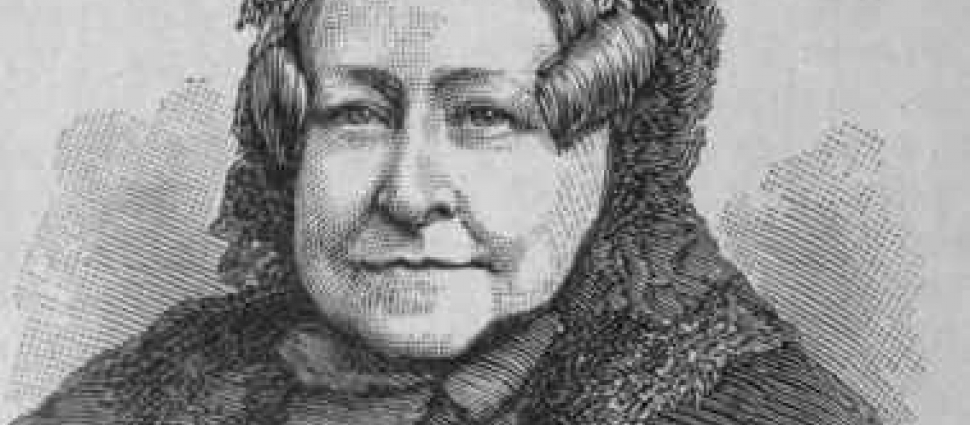Ellen Ranyard and Her Team of Bible Women

Ellen Ranyard and Her Team of Bible Women
In 1826, 16-year-old Ellen Henrietta White and her family attended a Bible meeting about 14 miles east of her London home. There, she met a girl her age, Elizabeth Saunders, who seemed disconsolate at the departure of her best friend. Deeply concerned, Ellen’s mother volunteered to take Elizabeth to their home for a few days. The change of scenery might do her good, she thought.
Naturally, Ellen and Elizabeth began talking about their interests.
“Have you ever thought what you will do with your life?” Elizabeth asked.
Ellen had never given it much thought. She liked to draw and read. “I hope I shall go on cultivating my mind and my faculties,” she replied.
“Yes, but have you thought that this cultivation is to enable you the better to live for others, not for yourself, and that you must live to do something in God's service?”
Again, Ellen had not thought about it. If Elizabeth was talking about Sunday School, Ellen’s mother had already told her she was not fit to teach. According to her family’s standards, she was not yet converted because she loved “worldly reading, such as the Literary Gazette, and Lord Byron's poetry.” If conversion meant leaving all that behind, Ellen said, “I wish to see more of the world before I leave it, especially of its books.”
She had, of course, read the Bible. In fact, she had read it all the way through three times, and loved it, “but one cannot always be reading one's Bible.”
Elizabeth asked her if she would like to meet some people who lived near and home and didn’t have a Bible to read. Ellen agreed, and Ellen’s mother gave her permission, with some hesitation.
“So we set forth,” Ellen wrote, “she with a Bible in her hand and a prayer in her heart, and in her pocket a pencil and a little book.” They walked to an area where impoverished people struggled to survived. Thirty-five of those families told the girls they never seen a Bible. For a sheltered teenager like Ellen, it was an unforgettable experience.
“I came home, having seen for the first time how the poor live; their ignorance, their dirt, their smells for we went upstairs to more than one sick-room; and I heard my friend in a way that I had never heard before (though religiously brought up) tell the good news of the love of Jesus to the consumptive and the dying. She spoke to them, but the Spirit of God carried the message home to me.”
“When I went to bed at night I took up my Bible to read my usual chapter with a new feeling for it, and a new light upon it from all I had seen and heard that day, and I thought I would begin the Book over again for Elizabeth's sake; and as I read ‘Let there be light,’ from that hour there was light upon its pages never seen before, for my hard young heart was softened, and a quiet new affection drawn out to this new and gentle friend.”[1]
She didn’t know, at that time, that she had been with Elizabeth on her last walk on earth. The two girls had contracted typhoid fever. Ellen recovered, but Elizabeth died.
Supplying the Missing Link
Instead of deterring Ellen from continuing her mission, the illness and death of her friend gave her a stronger resolve. She returned to the 35 homes and, after collecting some money, bought Bibles for them from the British and Foreign Bible Society. She eventually became a secretary of the Bible committee.
A few years later, Ellen and her family moved to Swanscombe in Kent, where, on 10 January 1839, she married Benjamin Ranyard, a landowner who was seven years her senior. Together, they had two sons and two daughters. But unlike most women who stopped their charitable activities after marriage, Ellen kept going.
She became particularly active after 1857, when the family moved to Bloomsbury, London, close to slum areas. There, she decided to do more than supply Bibles, and started programs to teach the women some trades. She also supplied recipes for nourishing but economical meals they could fix on a low income.
Ellen realized that it was difficult for the poor to accept the gospel from well-dressed missionaries who visited their homes for a few hours before returning to their plush homes, and who couldn’t begin to understand the struggles of low-income working classes. Besides, some people in the slums were ashamed to be seen by a clergyman or a “lady.” She then employed some of the resident women to become “Bible women” – what she considered “the missing link” in home missions.
She started with Marian, an orphan who had experienced both homelessness and poverty. It was the start of the Bible and Domestic Female Mission (later known as the Ranyard Mission). By 1867, the mission had employed 234 Bible women - the first group of paid social workers in Britain.
Ellen created three-month courses for prospective Bible women, teaching them the Scriptures as well as practical knowledge, including laws regarding the poor. Soon her model was reproduced in other cities, both in England and abroad. Some people asked how no one had ever thought of this “missing link” factor before.
More Accomplishments
With time, she added to her program meetings for mothers, a rescue home, and a network of nurses – the first district nurses in London. After completing the basic training, these nurses (also from working classes) attended courses at London hospitals. Besides treating common ailments, these nurses taught preventive measures and simple first-aid measures, checked the health of children and mothers, and referred serious cases to doctors and hospitals. Within 25 years, the Mission had over 80 district nurses in London.
All along, Ellen wrote down her experiences, which were later published in several publications. She also wrote poems and books for the Bible Society, including a children's book about the Bible, The Book and its Story.
She died from bronchitis at her home, on 11 February 1879, at 69 years of age – 53 years after her first visit to the London slums. Today, she is mostly remembered for her innovations in the field of social work and informal education. But her main goal had always been to take “the gospel to those who never come to hear it, and in every house, garret, and cellar beseeching men to be reconciled to God.”[2] She simply saw her social work as a natural extension of the love Christians feel (or should feel) for others.
“Reader, have you walked through St. Giles?” she asked. “Know, then, that St. Giles is nothing but the sample of a vast world unvisitable by the better classes, which lies behind the screen of their respectable dwellings. You breathe more freely as you escape into the neighborhood of the Museum; but henceforth, when you meet a living heap of rags and dirt which seems to have no business to cross your path along the open square, you may think whence such a being comes, and how it lives. ... Such self-respect as they have left is shown in keeping themselves out of sight; and they can only be reached by those who go forth diligently, after the example of their Master, to seek and save the lost.”[3]
[1] Lizzie Alldridge, Florence Nightingale, Frances Ridley Havergal, Catherine Marsh, Mrs. Ranyard, Cassell & Co., 1887, 105-107
[2] Ellen Ranyard, The Missing Link; Or Bible-Women in the Homes of the London Poor, London: James Nisbet & Co.1859, 8
[3] Ibid., 9





